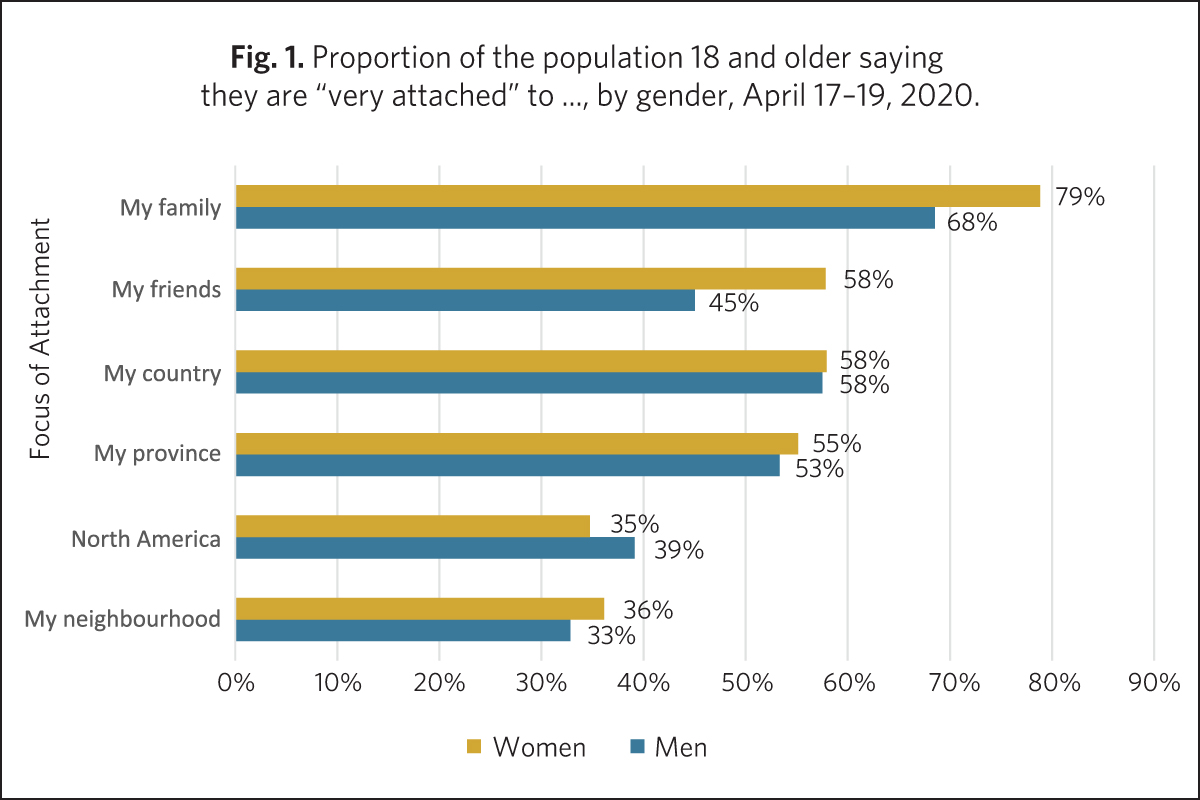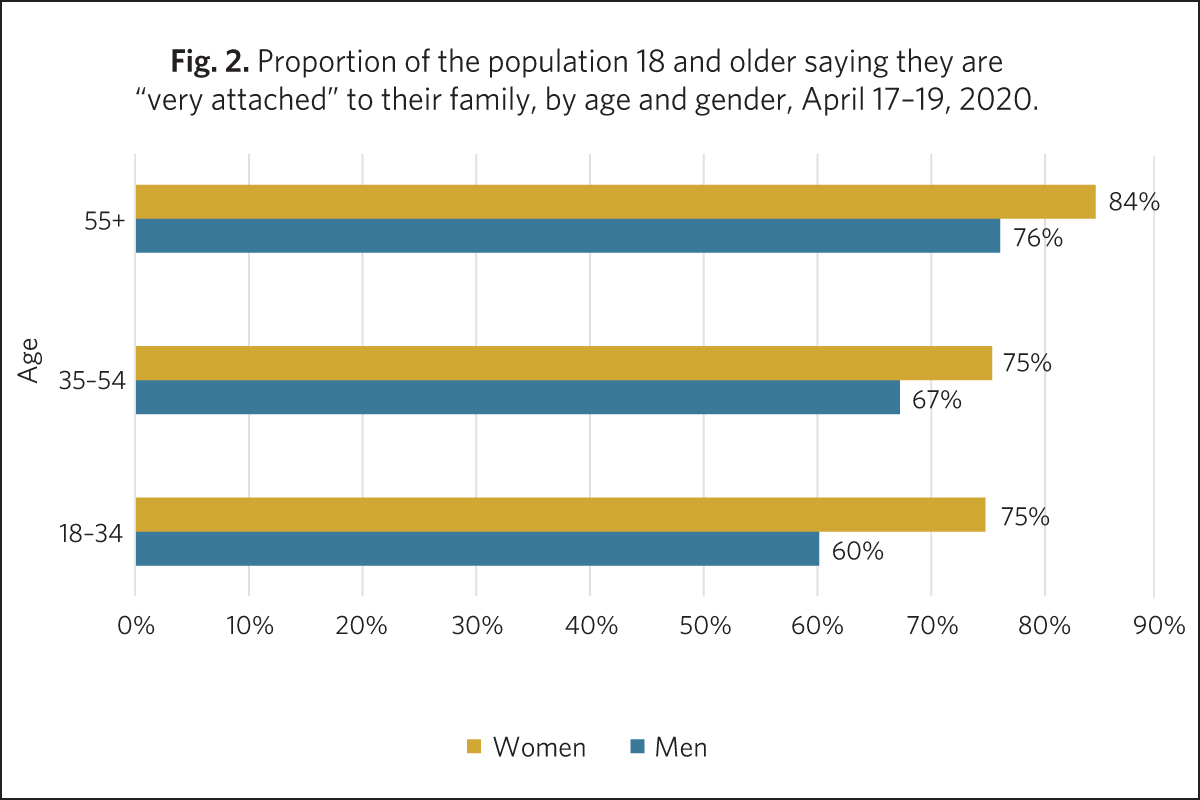Jennifer Kaddatz
April 24, 2020
Family attachment is vital to family well-being. Furthermore, family bonds are often more important, more robust and more enduring than other bonds a person will experience in their lifetime.
Family attachment is stronger than other types of attachments
According to a survey conducted by the Vanier Institute of the Family, the Association for Canadian Studies and Leger from April 17 to 19, 2020,1 family attachment is readily apparent within the COVID-19 pandemic environment.
In fact, according to respondents, family bonds are stronger than any other type of attachment (fig. 1).

Women more likely to say they are “very attached” to their family
Women typically report stronger attachment than do men, and this is true as well in the case of family attachment (fig. 1).
A full 95% of women and 91% of men aged 18 or older say they are “very attached” or “somewhat attached” to their family. When only those who reported “very attached” are considered, an even greater difference between the genders is observed: nearly 8 in 10 women (79%) report that they are “very attached” to their family, compared with 7 in 10 men (68%) (fig. 1).
Attachment to one’s family increases with age, especially for men
Older adults are particularly likely to report strong family bonds. More than 8 in 10 women (84%) and nearly 8 in 10 men (76%) in this age group reported that they are “very attached” to their families, compared with smaller shares of women and men in younger age groups (fig. 2).
For men, strong attachment grew by age: 60% of 18- to 34-year-olds report being very attached to their families, compared with 67% of 35- to 54-year-olds and 76% of those aged 55 and older. For women, differences were less pronounced (fig. 2).

Jennifer Kaddatz, Vanier Institute on secondment from Statistics Canada
Note
-
- The survey, conducted March 10–13, March 27–29, April 3–5, April 9–12 and April 17–19, 2020, included approximately 1,500 individuals aged 18 and older, interviewed using computer-assisted web-interviewing technology in a web-based survey. All samples, except for the March 10–13 sample, also included booster samples of approximately 500 immigrants. Using data from the 2016 Census, results were weighted according to gender, age, mother tongue, region, education level and presence of children in the household in order to ensure a representative sample of the population. No margin of error can be associated with a non-probability sample (web panel in this case). However, for comparative purposes, a probability sample of 1,512 respondents would have a margin of error of ±2.52%, 19 times out of 20.


